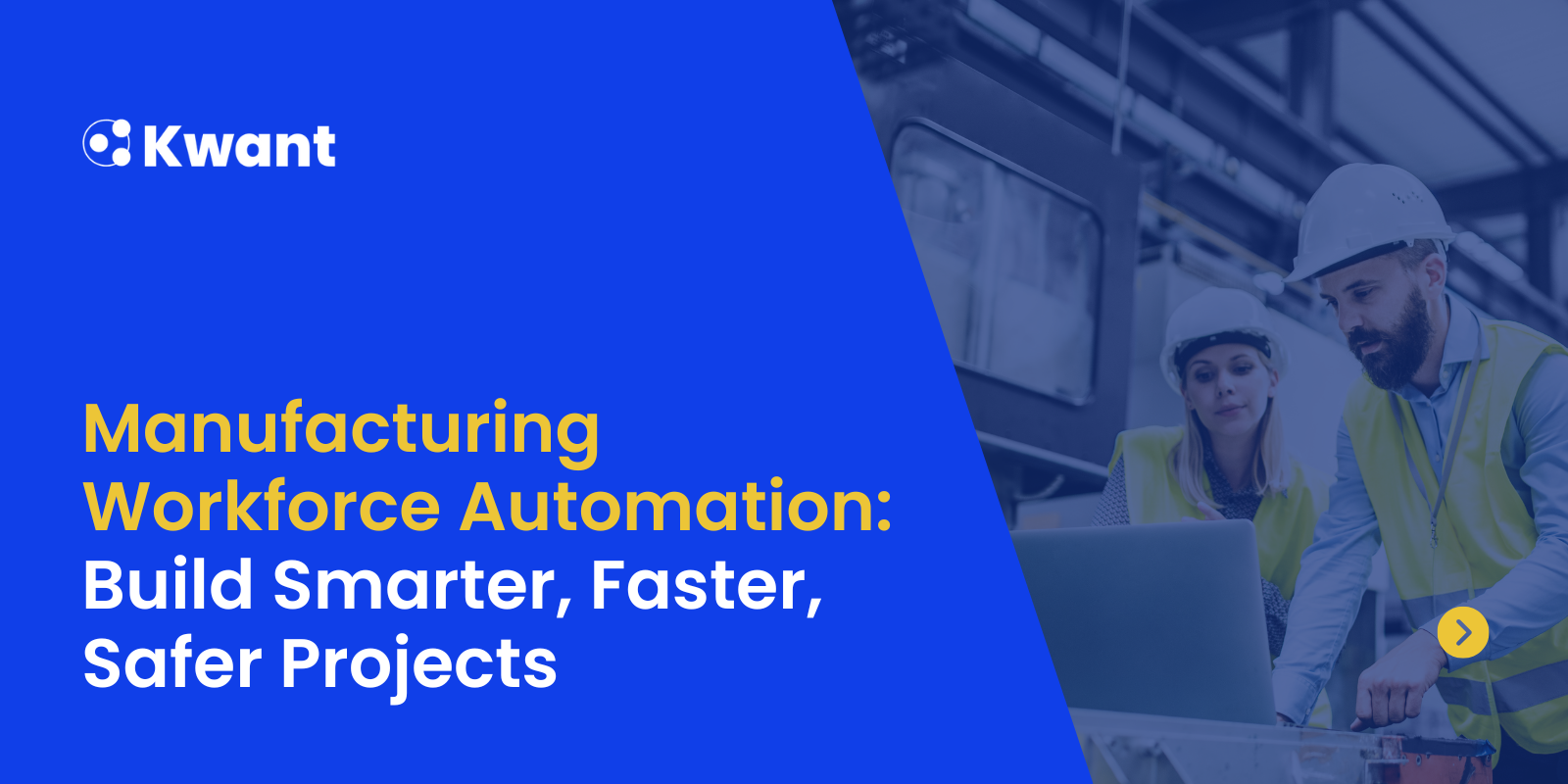Manufacturing: The Race Against Time How Digital Tools Accelerate Manufacturing Plant Builds
Successfully executing a manufacturing plant construction project is one of the biggest tests of time management for General Contractors (GCs). Standard manufacturing plants typically take 18 to 36 months for construction and setup, while large, complex facilities can stretch to 3 to 5 years or more. In today’s competitive manufacturing landscape, such timelines represent a serious vulnerability. Every day saved in construction is a day closer to full operation and revenue generation.
This makes adopting a digital strategy for plant construction not just a choice but a necessity for contractors who want to stay ahead of the curve.
The Traditional Bottlenecks in Factory Construction
Building a manufacturing plant involves the integration of multiple specialized teams, advanced machinery, and extensive infrastructure. This complexity can create significant bottlenecks in traditional construction processes, which often lead to delays and increased costs. Common challenges include:
Fragmented Information
Traditional construction methods rely on information being passed manually between design, procurement, and field teams. This often creates data silos. A missing detail, like a specification for a foundation pour, can halt an entire trade or require costly rework. Fragmented information leads to inefficiencies and undermines the contractor’s ability to maintain a reliable project schedule.
Reactive Scheduling
Many GCs still depend on standard project scheduling tools that quickly become outdated. Unforeseen events such as fluctuating material lead times, unexpected site conditions, or delays in subcontractor deliveries can throw off schedules. This often forces teams into a reactive cycle, constantly reshuffling tasks rather than proactively managing them. Reactive scheduling is one of the key reasons why over 70% of construction projects finish late or exceed budgets.
Inefficient Workforce Utilization
Without accurate, real-time insights into project progress, workforce management suffers. Trades may arrive on-site before materials are ready, or crews may be underutilized due to poor sequencing. This inefficiency contributes to delays and higher labor costs, reducing overall construction productivity.
How Digital Tools Accelerate Manufacturing Plant Builds
The good news is that modern digital construction tools can drastically improve efficiency, reduce delays, and help GCs regain control over timelines. The shift is from static planning to dynamic, data-driven scheduling and real-time project management.
Real-Time Progress Monitoring and Project Tracking
Digital tools provide contractors with immediate visibility into what is happening on-site. This transforms project management from a reactive to a proactive process.
Real-Time Data Collection: Mobile devices, sensors, and Internet of Things (IoT) technology capture field data instantly. This data automatically updates project schedules, giving project managers a live view of progress.
Proactive Conflict Resolution: When issues arise, such as a delayed steel delivery, digital tools flag the downstream impact on other trades. Project managers can adjust schedules immediately, re-sequencing work to prevent costly idle time.
Example: By tracking trade-specific tasks on a digital dashboard, GCs can ensure that prep work is completed precisely when specialized equipment arrives, optimizing construction flow and workforce productivity.
Optimizing Workforce with Data
Labor shortages and skill gaps are major challenges in construction. Digital tools help maximize the efficiency of available crews.
Accurate Manpower Forecasting: By comparing actual vs. planned work completion rates, GCs can forecast labor needs with precision. This prevents overstaffing, reduces idle time, and avoids delays caused by insufficient manpower.
Streamlined Task Assignment: Platforms supporting digital collaboration, including systems like the Last Planner System, ensure all team members have clear assignments, dependencies, and constraints on their mobile devices. This reduces time spent in meetings, minimizes miscommunication, and keeps tasks flowing smoothly.
The ROI of Digital Adoption in Manufacturing Construction
The advantages of adopting digital tools go far beyond faster completion. They also improve project control, risk management, and predictability, which are critical for delivering complex manufacturing facilities on time and on budget.
- Faster Project Timelines: Modular construction combined with digital tools can reduce small plant construction timelines to 12–24 months, while large-scale plants benefit from every efficiency gain possible.
- Reduced Delays: Some projects have reported a 50% reduction in planning-related delays through collaborative digital project management software.
- Cost Savings: Tools that support Building Information Modeling (BIM) and clash detection can reduce costly rework by around 20%, saving both time and money.
- Repeatable Efficiency: Once a digital workflow is established, GCs can replicate these efficiencies across multiple projects, improving overall project delivery performance.
Why Are Digital Tools No Longer Optional?
The construction of manufacturing plants is highly complex, and traditional methods are often insufficient in today’s competitive environment. Digital project acceleration tools allow GCs to move beyond reactive scheduling, fragmented information, and workforce inefficiencies. With real-time monitoring, accurate manpower forecasting, and streamlined task management, GCs can drastically reduce idle time, minimize risks, and optimize resources.
In essence, digitalization transforms project schedules into real-time command centers, enabling GCs to make faster decisions and keep every aspect of construction aligned. In a landscape where every day saved translates to earlier operations and revenue, digital adoption is no longer optional; it's essential.
Conclusion
The race against time in manufacturing plant construction is real, and delays can be costly. By adopting digital tools, GCs gain visibility, control, and the ability to respond proactively to challenges. From real-time progress tracking to optimized workforce management and data-driven scheduling, digital strategies are reshaping how factories are built.
GCs leveraging these tools are not just shaving weeks off construction schedules, they are building a foundation for repeatable, high-efficiency manufacturing plant construction, ensuring projects finish on time, under budget, and ready for operational success.
Are you ready to transform your manufacturing plant project into a digitally optimized, real-time managed construction process? The future of construction efficiency is digital and it starts with embracing the right tools today
.svg)










%20(1).svg)














